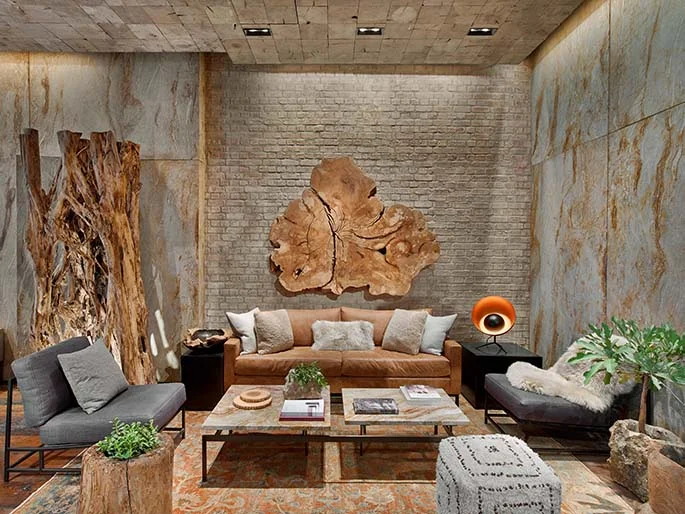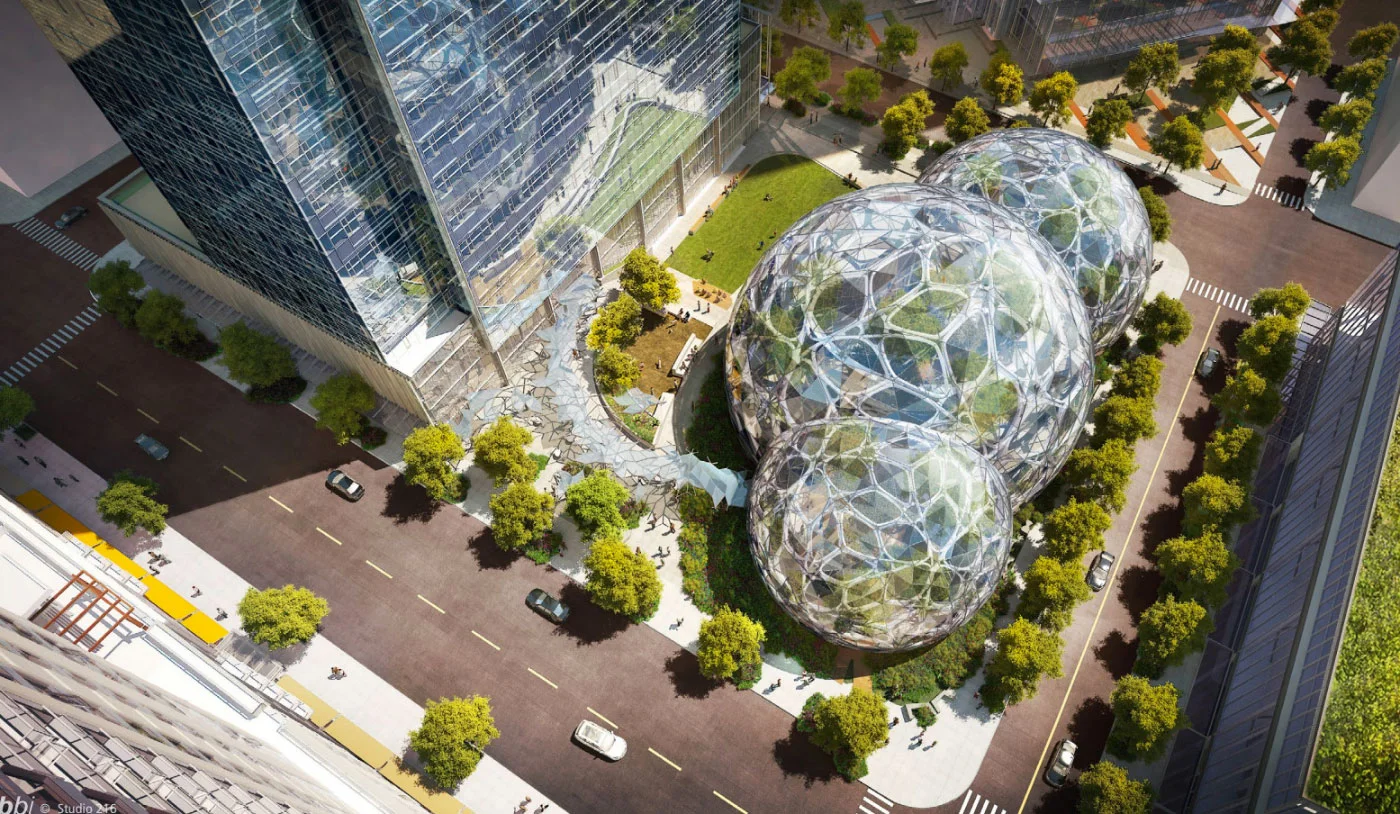5 Best Biophilic Design Examples — Biofilico Wellness Interiors
From Seattle to Scotland, the best biophilic architecture examples can be found in a variety of settings, but they all have one thing in common: interiors that improve the built environment through the use of natural materials, plants, lighting, and other sensory design elements to give the user an experience that energizes, refreshes, and connects them to nature.
The 'seven biophilic design patterns' provide a framework for understanding these examples, encompassing elements such as the use of natural materials, indirect experiences of nature through natural analogues, and the experience of space and place that resonates with our biological evolution and preference for savanna-like settings.
The Biophilia Concept
The concept of biophilia in architecture is not new, but it is certainly gaining more attention as we strive for more sustainable and healthy ways of living.
Green architecture, with its historical development focused on reducing environmental impact through sustainable materials and energy-efficient systems, has played a significant role in the formalization of the green building movement. A notable design intervention in this movement is the use of green walls, which bring nature into interior spaces and create a more harmonious and connected environment.
Many famous biophilic architects and interior designers have embraced this concept and incorporated it into their projects.
Below we take a look at some of our favourite biophilic buildings and structures that exist today, but first, a little background information.
What is Biophilia?
Biophilia is a term used to describe the innate and deep-seated connection that humans have with the natural world. This concept suggests that humans possess an inherent affinity for the natural environment, which has evolved over time as a result of our interactions with nature.
The term “biophilia,” which translates to “love of life” or “love of living systems,” was first introduced by renowned biologist and naturalist Edward O. Wilson in his 1984 book titled “Biophilia.”
This groundbreaking work laid the foundation for a new field of study, exploring the psychological, physiological, and sociocultural aspects of our relationship with the natural world.
The Biophilia Hypothesis
Wilson's biophilia hypothesis posits that our affinity for the natural environment is an adaptive trait that has developed through natural selection, as it has been crucial for our survival and well-being throughout history.
Biophilia Health Benefits
The implied health benefits of connecting with nature are numerous and well-documented in scientific literature. Research has shown that exposure to the natural environment can have a positive impact on mental health by reducing stress, anxiety, and depression.
Natural lighting, such as sunlight through large windows or skylights, can also reduce stress and improve mood, further enhancing mental health.
Furthermore, spending time in nature has been linked to improved cognitive function, increased creativity, and enhanced emotional well-being.
Physical health benefits associated with connecting with nature include reduced blood pressure, boosted immune system function, and increased overall longevity.
In conclusion, the concept of biophilia highlights the importance of maintaining a strong connection with the natural world in order to promote human health and well-being.
As urbanization and technological advancements continue to distance us from the natural environment, it is essential to recognize and prioritize the role of nature in supporting our physical, psychological, and emotional health.
By understanding and embracing our inherent affinity for nature, we can foster a healthier, more sustainable relationship with the natural world that benefits both humans and the environment.
What is Biophilic Design?
Biophilic design is an innovative approach to architecture and interior design that aims to create a harmonious connection between human beings and the natural world.
The concept is rooted in the idea that humans have an innate affinity for nature, and incorporating natural elements like plants, water, and sunlight into built environments can promote well-being, productivity, and overall quality of life.
This design strategy merges the principles of sustainability, aesthetics, and functionality to create spaces that foster a sense of belonging and inspire a deeper appreciation for our planet.
Key Principles of Biophilic Design
The key principles of biophilic design revolve around three primary aspects: direct nature experiences, indirect nature experiences, and spatial configurations.
Direct nature experiences involve incorporating living elements such as plants, water features, and natural light into the design.
Indirect experiences include the use of natural materials, colors, and natural patterns like wood grain, stone textures, and leaf patterns that evoke the essence of nature.
Lastly, spatial configurations involve designing spaces that mimic the structure and organization of natural environments, such as open-concept floor plans or curvilinear shapes that replicate organic forms.
Biophilic design has gained popularity in multiple areas, including corporate offices, hotels, resorts, healthcare facilities, educational institutions, and residential properties.
The integration of natural elements into these spaces has been proven to enhance the well-being of occupants, promote greater productivity, reduce stress levels, and contribute to a more sustainable and environmentally conscious society.
Spatial configurations that mimic natural environments further enhance the biophilic experience by creating a more immersive and harmonious connection to nature.
In conclusion, biophilic design represents a paradigm shift in architecture and interior design by prioritizing the connection between humans and nature.
By embracing this design strategy’s principles, architects and designers can create spaces that not only enhance occupants’ well-being but also contribute to a more sustainable future.
As awareness grows around the benefits of biophilic design, it is anticipated that this approach will continue to gain traction across various sectors of the real estate and hospitality industry.
Top Five Biophilic Design Examples
1 Hotels, New York & Miami
1 Hotels is an urban retreat inspired by nature. In a city packed with traffic, endless high rises, and lots of commotion, 1 Hotels stands out with its biophilic approach. Outside, you will find green walls brimming with lush greenery, while inside, interspersed plants and interiors crafted using reclaimed materials promote a warm aesthetic.
This biophilic experience doesn’t just extend to this hotel’s decor. They offer farm-to-fork food in their dining room and even a daily fresh fruit stand in the lobby.
2. The Spheres, Seattle
The Spheres are home to 40,000 plants from 30 different countries, including a variety of green walls that account for over 4,000 square feet of vegetated surface.
This Amazon building aims to connect employees and visitors with a direct link to nature in an urban setting— and with their glass dome that lets in an abundance of natural light and array of greenery, they delivered on their promise and then some!
3. Ruins Studio, Scotland
Ruins Studio garnered many awards the year after its competition—and for good reason. Designed by Lily Jencks Studio, NDA, and Savills-Smiths Gore, this unique structure was built inside a ruin. The original stone was kept intact, now being used as a natural, textural shell. It creates a strong contrast to the smoother, contemporary build nestled inside.
4. The Wardian, London
The Wardian features a sky lounge crafted with extra-high ceilings, expansive trees, and floor-to-ceiling windows. Whether relaxing in the sky lounge or taking a dip in the swimming pool immersed in a lush, natural landscape, it's easy to forget that you are in the bustling metropolis of London. This project is still under construction, but it is already proving itself to be an iconic biophilic design case study.
We created a pop-up Vitamin Nature wellness space for the developer EcoWorld Ballymore in 2018. The results from that research study can be found online here.
5. Second Home, Lisbon
Second Home has many locations, but the one in Lisbon is truly a heaven for biophilic design buildings fans with its abundance of light and over 1,000 plants. Both Biofit & Biofilico were effectively based there for the formative first year or two of the business!
This shared workspace is ideal for teams of 1 to 100 that need a workspace and want to experience an extra boost of creativity, happiness, and productivity through the power of Vitamin Nature. Wellness isn't just built into their interior; they also offer members yoga classes, surf trips, and educational and cultural seminars.
Bonus: Karolinska Institutet Gym by Biofit, Stockholm
And one more for luck... we couldn't resist adding in our tiny biophilic gym at the Karolinska Institutet medical university, just to show that not all these projects need to be large-scale!
We created a space with maximum health benefits by implementing a design that consists of both direct and indirect biophilia, including muraled walls, circadian lighting, air-purifying plants, and 100% sustainable materials. Students of the medical university are free to use the space whenever they choose, and regular classes provide extra incentives for those in need of a break from their research studies.
Conclusion
Biophilic design architecture is becoming increasingly popular as more and more people recognize the benefits of being connected to nature. Famous biophilic interior designers and architects are leading the way with innovative designs that incorporate natural elements into their structures. These biophilic structures and buildings offer an experience that energizes, refreshes, and connects the user to nature.
For more information on biophilic design and its benefits, visit our Biophilic Design Consultants page.





